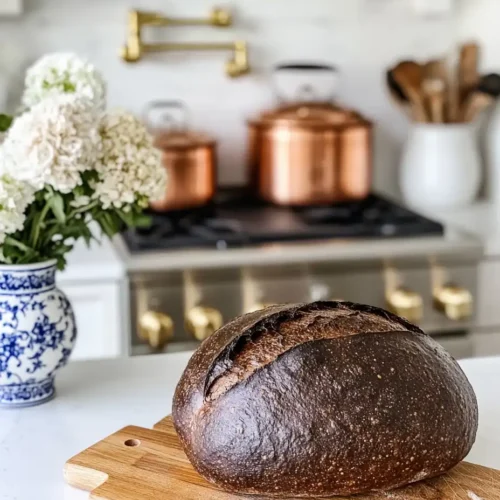Feed your sourdough starter 4-12 hours before beginning the recipe. It should be really nice and bubbly.
Add your active starter, flours, sugar, molasses, cocoa powder, softened butter, salt, and water to the bowl of a stand mixer with a dough hook.
Mix at low speed for 2-3 minutes until you notice the dough pulling away from the sides of the bowl into a ball. Increase your speed and mix for another 4-5 minutes until the windowpane test is met*.
Set the dough in a lightly oiled bowl covered with a damp tea towel, plastic wrap, or a lid. A dry towel will cause the dough to dry out considerably, and we want it to stay moist.
Place in a warm location to begin the bulk fermentation. We're looking for doubling, which should take somewhere in the realm of 8-12 hours.
After the first rise, roll out the dough into a rectangle on a floured surface. Shape by rolling up as a traditional loaf and pressing down the seam.
Place seam-side down in a lightly buttered or parchment paper-lined loaf pan. You can use a Dutch oven in place of a loaf pan, working your dough into a boule or round loaf.
Again, cover your pan with a damp tea towel and let the dough rise in a warm place for 2 to 4 hours until doubled.
With the completion of your second rise, preheat the oven to 375°F (190°C).
Score the top of your loaf, if desired. This creates a beautiful crust with very little effort.
You can add an optional egg wash at this point. Whisk together one egg with a tablespoon of water, then brush it over the top of the loaf.
Bake for 35 to 40 minutes, cooling completely before slicing.
